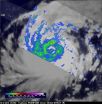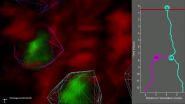(Press-News.org) In response to the rise of drug-resistant pathogens, doctors are routinely cautioned against overprescribing antimicrobials. But when a patient has a confirmed bacterial infection, the advice is to treat aggressively to quash the infection before the bacteria can develop resistance.
A new study questions the accepted wisdom that aggressive treatment with high drug dosages and long durations is always the best way to stem the emergence and spread of resistant pathogens. The review of nearly 70 studies of antimicrobial resistance, which was authored by researchers at Princeton and other leading institutions and published last week in the journal Proceedings of the Royal Society B reveals the lack of evidence behind the practice of aggressive treatment in many cases.
"We found that while there are many studies that test for resistance emergence between different drug regimes, surprisingly few have looked at the topic of how varying drug dosage might affect the emergence and spread of resistance," said Ruthie Birger, a Princeton graduate student who works with C. Jessica Metcalf, an assistant professor of ecology and evolutionary biology and public affairs at Princeton's Woodrow Wilson School, and Bryan Grenfell, the Kathryn Briger and Sarah Fenton Professor of Ecology and Evolutionary Biology and Public Affairs in Princeton's Woodrow Wilson School. Birger, Metcalf and Grenfell coauthored the paper with colleagues from 16 universities. "We are a long way from having the evidence for the best treatment decisions with respect to resistance for a range of diseases," Birger said.
Microbes such as bacteria and parasites can evade today's powerful drugs by undergoing genetic mutations that enable them to avoid being killed by the drug. For example, bacteria can develop enzymes that degrade certain antibiotics. The logic behind aggressive treatment goes something like this: kill off as many microbes as you can so that few will be around to evolve into resistant forms.
But some scientists have observed a different outcome in mice infected with both an already-resistant strain of malaria and a non-resistant strain. The high-dose drug treatment killed off the non-resistant malarial parasites, leaving the resistant strains to multiply and make the mice even sicker.
The idea that aggressive treatment may backfire against malarial parasites led the authors of the current study to comb the scientific literature to examine whether the same may be true for other types of microbes such as bacteria. The few studies that they found — mostly in laboratory cell cultures rather than animal models or patients — suggest that the picture is complicated, and depends on whether the resistance is new or existing, how many mutations are necessary for the pathogen to become resistant, and how long the drugs have been in use. "It's remarkable how little we know about this topic," said Metcalf. "The malaria study conducted by Silvie Huijben and colleagues at Pennsylvania State University is an inspiring step towards developing an evidence base for these important issues."
In the current analysis, the study authors found that drug resistance is governed by two factors: the abundance of the pathogen and the strength of the selection pressure that drives the pathogen to evolve. Aggressive treatment deals with the first factor by killing off as much pathogen as possible, while moderate treatment may, for some pathogens, reduce the ability for the resistant pathogen to thrive (for example, by maintaining the competitive advantage of a co-infecting drug-sensitive strain of the pathogen) but still reduce total pathogen levels sufficiently that the patient can recover.
Finding the ideal dose and duration of treatment, one that cures the patient without aiding the spread of resistance, will likely be done on a disease by disease basis, the authors found.
One possibility is that moderate treatment might be best used against already-resistant microbes to prevent their spread. Moderate treatment may also be best for drugs that have been on the market for several years with plenty of time for resistant strains to develop.
Aggressive treatment might be best for pathogens that develop resistance slowly, over the course of several mutations. High doses early in the process could be effective at heading off the development of resistance.
INFORMATION:
The article was published online September 24, 2014. doi: 10.1098/rspb.2014.0566
Roger D. Kouyos, C. Jessica E. Metcalf, Ruthie Birger, Eili Y. Klein, Pia Abel zur Wiesch, Peter Ankomah, Nimalan Arinaminpathy, Tiffany L. Bogich, Sebastian Bonhoeffer, Charles Brower, Geoffrey Chi-Johnston, Ted Cohen, Troy Day, Bryan Greenhouse, Silvie Huijben, Joshua Metlay, Nicole Mideo, Laura C. Pollitt, Andrew F. Read, David L. Smith, Claire Standley, Nina Wale and Bryan Grenfell. 2014. The path of least resistance: aggressive or moderate treatment? Proc. R. Soc. B 281, 2014.0566.
The work emerged from two workshops held at Princeton University and funded by the RAPIDD program of the Science and Technology Directorate, Department of Homeland Security and the Fogarty International Center, National Institutes of Health; Science and Technology Directorate, Department of Homeland Security; contract HSHQDC-12-C-00058
Two NASA satellites captured data on Typhoon Phanfone as it continues to strengthen as it moves through the Northwestern Pacific Ocean.
The Tropical Rainfall Measuring Mission or TRMM satellite flew over Typhoon Phanfone on Oct. 2, 2014 at 0939 UTC (5:39 a.m. EDT). The rainfall pattern observed using TRMM's Microwave Imager (TMI) and Precipitation Radar (PR) data showed that Phanfone was much better organized than a day earlier. This precipitation analysis revealed that intensifying typhoon Phanfone had formed a large eye. The heaviest rainfall was shown falling at a ...
NASA's Terra satellite spotted the birth of Tropical Storm Vongfong in the Northwestern Pacific Ocean on Oct. 3. Vongfong is the nineteenth tropical storm of the Northwestern Pacific typhoon season.
The MODIS or Moderate Resolution Imaging Spectroradiometer instrument that flies aboard NASA's Terra satellite captured a visible image of Tropical Storm Vongfong on Oct. 3 at 00:30 UTC (Oct. 2 at 8:30 p.m. EDT). At the time of the image, the center of Tropical Storm Vongfong was located just to the northeast of Pohnpei, one of four states in the Federated States of Micronesia. ...
Tropical Storm Simon is following the path of several other tropical storms that formed in the Eastern Pacific Ocean by crawling northward along the western coastline of Mexico. NOAA's GOES-West satellite captured an infrared image of Simon on Oct. 3 that showed the eastern side of the storm over Mexico.
An infrared image taken from NOAA's GOES-West satellite on Oct .3 at 7:45 a.m. EDT showed strong thunderstorms circling Tropical Storm Simon's center and a fragmented band of thunderstorms in Simon's eastern quadrant bringing rainfall to western Mexico. Simon's center ...
Scientists at the U.S. Department of Energy's Argonne National Laboratory have created a new model to more accurately describe the greenhouse gases likely to be released from Arctic peatlands as they warm. Their findings, based on modeling how oxygen filters through soil, suggest that previous models probably underestimated methane emissions and overrepresented carbon dioxide emissions from these regions.
Peatlands, common in the Arctic, are wetlands filled with dead and decaying organic matter. They are the result of millions of years of plants dying and breaking down ...
It has become common for people who have pets to refer to themselves as "pet parents," but how closely does the relationship between people and their non-human companions mirror the parent-child relationship? A small study from a group of Massachusetts General Hospital (MGH) researchers makes a contribution to answering this complex question by investigating differences in how important brain structures are activated when women view images of their children and of their own dogs. Their report is being published in the open-access journal PLOS ONE.
"Pets hold a special ...
West Orange, NJ. October 3, 2014. Stroke researchers have confirmed that damage to the right frontal-subcortical network may cause ipsilateral spatial neglect. Among individuals with ipsilateral neglect, a much greater proportion had frontal subcortical damage than anticipated by the investigators – 83% vs the expected 27%. A difference was also seen in spatial bias, ie, the type of spatial errors among this group tended to be 'where' (perceptual-attentional) rather than 'aiming' (motor-intentional) errors. Ipsilesional Neglect: Behavioral and Anatomical Correlates (doi: ...
A powerful scientific tool for editing the DNA instructions in a genome can now also be applied to RNA, the molecule that translates DNA's genetic instructions into the production of proteins. A team of researchers with Berkeley Lab and the University of California (UC) Berkeley has demonstrated a means by which the CRISPR/Cas9 protein complex can be programmed to recognize and cleave RNA at sequence-specific target sites. This finding has the potential to transform the study of RNA function by paving the way for direct RNA transcript detection, analysis and manipulation.
A ...
VIDEO:
A software program developed by engineers at Drexel University, called Lineage Editing and Validation (LEVER), allows biologists to tag and track cell proliferation to validate lineage trees.
Click here for more information.
For hundreds of years biologists have studied cells through the lens of a microscope. With a little help from a team of engineers at Drexel University, these scientists could soon be donning 3-D glasses in a home-theater-like lab to take their own ...
FALLS CHURCH, Va. (October 3, 2014) — A new National Institute for Occupational Safety and Health (NIOSH) study, published online in the Journal of Occupational and Environmental Hygiene, found that recommended safe handling practices for workers who administer antineoplastic drugs in healthcare settings are not always followed.
Results are derived from the 2011 Health and Safety Practices Survey of Healthcare Workers, the largest federally-sponsored survey of healthcare workers in the U.S., which addresses safety and health practices relative to use of hazardous chemicals. ...
Washington, DC—The Endocrine Society today issued a Clinical Practice Guideline (CPG) advising against the use of testosterone therapy in healthy women.
The CPG, entitled "Androgen Therapy in Women: A Reappraisal: An Endocrine Society Clinical Practice Guideline," was published online in the Journal of Clinical Endocrinology and Metabolism (JCEM), a publication of the Endocrine Society. The Society updated its 2006 recommendations to address new research concerning testosterone and dehydroepiandrosterone (DHEA) therapy in women as well as advances in testosterone testing ...





